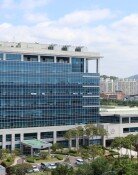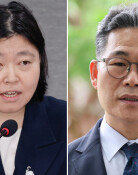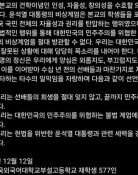Government to Promote Housing Development on Public Land Nationwide
Government to Promote Housing Development on Public Land Nationwide
Posted July. 20, 2005 03:14,
Cheong Wa Dae reportedly has decided that the government will primarily drive the development of public land for housing complexes, as well as redevelopment and reconstruction plans. This fact was confirmed in an insider report of the property planning committee in the ruling Uri Party, which this paper exclusively obtained.
The plan can be translated into the governments will of preventing capital gains produced by development projects from flowing into the private sector. However, its goodwill could create controversies because of unexpected adverse effects such as restricting the activities of the private construction sector and failing to meet the demand of houses with good qualities. In the past, people cited the necessity of government-driven development only for a few newly developed cities such as Pangyo, Seongnam-si in Gyeonggi.
The report pointed out that it is necessary to increase the floor area ratio of houses, and to lower the ratio of small-sized homes, which currently account for 60 percent of the total households under the plan, and, instead, to raise the proportion of middle-and-large sized houses. At the same time, the paper added that it is necessary to sharply cut the distribution price of newly built middle-and-large sized apartments, which is widely expected to be around the 15 million won per pyeong (3.954 sq feet) mark.
Meanwhile, the ruling Uri Party has reviewed Measures for Lowering the Distribution Price of Newly Built Houses in the Newly Developed Area in Pangyo, submitted by the Korea National Housing Corporation, and is seriously considering adopting the plan. The corporation calculated the distribution price of mid- and large-sized apartments at 10.85 million won per pyeong in its report on the basis of a 159 percent floor area ratio, 6.89 million won for a housing lot and 3.96 million won for a standard construction cost. The report also cited that the corporation could lower the distribution price to 7.4 million won while presenting ways to meet the goal, including: increasing the floor area ratio to the level of the nearby newly developed area in Bundang; supplying housing lots at lower prices; raising the proportion of government financial support for establishing infrastructure such as the new Bundang subway line; and decreasing the amount of green space while selling the space.
Going as planned, people can be provided middle- and large-sized apartments at 7.4 million won, but the price could rise to nine to 10 million won if private companies arrange the distribution of newly built houses since the figure includes the costs of taking bids for the distribution and financial transaction fees.
Meanwhile, the ruling party is determined to implement tough measures against real estate speculation, which is comparable to the notion that land belongs to the public. Jung Jang-sun, the head of the Policy Coordination Committee, said at a policy making meeting for senior officials chaired by floor leader Jung Se-gyun, The party will consider enhancing the property maintenance tax system and reimbursing capital gains from development while taking caution in certain cases where courts ruled against the notion of the public concept of land ownership.
In-Jik Cho Chi-Young Shin cij1999@donga.com higgledy@donga.com







